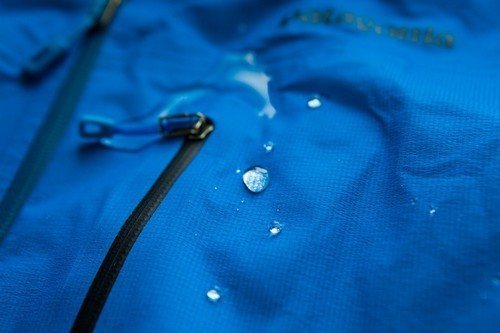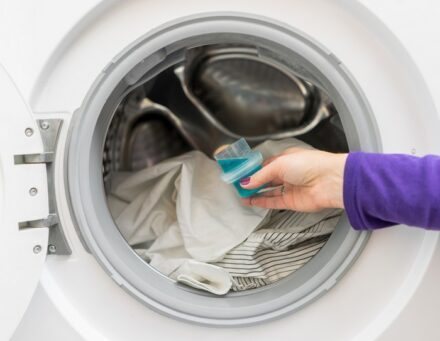To this day, washing membrane clothes raises many questions: how and with what means, how often and whether it’s worth it at all. The prevalence of such questions is due to the fact that membrane products, unfortunately, do not come with detailed care instructions, even despite their undoubted high cost.

Special treatment
In order to understand why membrane clothes cannot simply be washed along with other things, you first need to understand what distinguishes them from them. It itself is an ultra-thin film with many microscopic holes. Such a film is applied to the back layer of the product, allowing it not to let water through, but at the same time remain “breathable”.
The material is highly valued for the fact that it combines all the properties that, in principle, clothing may need, and at the same time remains thin. In addition to the main property - water-repellent - the membrane also does not allow wind of any strength to pass through, so it will be difficult to freeze in it. In this case, the clothing is designed in such a way that the moisture released by the body is absorbed from the inside. Membrane items are a solution to many problems both for travelers, athletes and lovers of an active lifestyle, as well as for ordinary people. However, they have one significant drawback, and that is the high price. This factor only adds to the owner’s concern for the item, which is why it is important not to spoil it when washing.
Black and white zones
There is a clear and fixed set of rules that summarize what can and cannot be done with a membrane item. Forbidden:
- Wash such clothes with powder. Any crystalline substance, having penetrated the mesh, will remain there forever. This means that the material will completely lose its properties.
- Treat with bleach. Or any means that contain it. The fact is that chlorine molecules create additional perforation in the mesh, thereby reducing efficiency. The fabric begins to blow out and repel moisture worse.
- Various rinsers and conditioners that can be found in any bathroom will also not work. Some of their components can spoil the material.
- Cook or perform any type of processing at high temperature. Even washing in a machine at temperatures above 40 degrees can glue the pores and “wash off” the paint from the product. The same thing will happen when you try to dry it on a radiator or iron the product.
- Squeeze by twisting. Firstly, there is no need for this due to the very properties of the membrane. Secondly, such mechanical action gradually destroys the tissue.

Instead you need:
- First of all, carefully read the instructions on the label. It is presented in the form of symbols from a standard scheme that is the same throughout the world.
- Do not exceed the limit of 40 degrees. 30-40 is the range within which the ideal temperature for washing is located.
- Always use a special product. From the great variety of options specially designed for this type of fabric, you need to choose your own and always have such a product in your home.If for some reason it is not available, you can use regular soap. It is also suitable for washing out stains that have appeared.
- Wring out by hand, never twisting the item. There is not much moisture left after washing, so you can easily get rid of it with more delicate movements.
- Dry horizontally, laying it out on a flat surface. Exposure to high temperatures or sunlight can damage the fabric.
- Renew the impregnation.
Big wash
Even if the owner is extremely careful, and there are no stains on the membrane item, it still needs to be washed, and quite often. This is one of the most common mistakes among those who wear membrane items. The misconception is that they are afraid to “wash out” an expensive item with unique properties, thereby completely ruining it. In truth, it needs to be washed almost more often than other things, since the side with the micro-mesh is absorbent and the mesh itself, accordingly, tends to clog up quite quickly. 5 life hacks for ironing and washing old clothes
Squeeze with your hands, never twisting the item. There is not much moisture left after washing, so you can easily get rid of it with more delicate movements.
Dry horizontally on a flat surface. Exposure to high temperatures or sunlight may damage the fabric.
Big Wash
- Even if the owner is extremely careful and there are no stains on membrane items, they still need washing, and quite often. This is one of the most common mistakes among those who wear membrane items. The misconception lies in the fact that they are afraid to “wash” something that is expensive and unique in its properties, thereby completely ruining it. In truth, it needs to be washed almost more often than other things, since the side with the micromesh is absorbent and the mesh itself, accordingly, tends to clog quite quickly.
- 5 life hacks for ironing and washing old clothes
- There are many opinions regarding the preferability of hand or machine washing, and they often contradict each other. Moreover, the same arguments are given in defense of both methods. You can easily come across the statement that hand washing can damage fabric due to aggressive mechanical action. But it is also easy to come across an identical formulation stating that machine washing can do this. The truth lies in the fact that you can wash the membrane either way. But regarding a specific item, the last word is always with the manufacturer, and you should look for it on the label.
- Some membrane clothing can even be dry-cleaned. There are also specific recommendations, and it is better to indicate them in a note and hand it over along with the item. Employees should be asked to rinse the clothing with a distilled colorless hydrocarbon solvent, and be sure to restore the DWR water-repellent layer at the final stage by applying a special impregnation agent.
- Salt, wash: using the most famous seasoning when washing things

Before washing, you must:
Check all pockets for forgotten items;
Wash especially strong stains with soap;
Read the instructions;
Make sure that a special agent is available.









